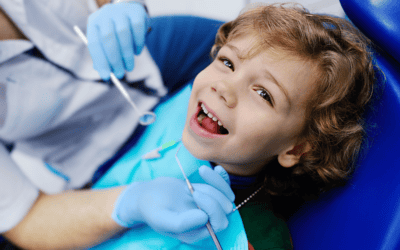When should you expect to see your child’s first teeth?
Since no two children are exactly the same, there’s no single answer to this question. From one child to the next — even one sibling to the next — teeth may arrive on different schedules. Most commonly, you’ll notice increased saliva, hand sucking, and exploration of the world by your baby’s mouth beginning around the age of three months. All those things are signs that teeth are making their way. The most typical time for a first tooth to appear is around the age of six months. The first one to arrive will probably be a lower front tooth.
Even though a tooth typically appears around the age of six months, some children don’t have teeth before turning a year or even 18 months old. Whenever that first tooth appears, you can expect that your child will have a full set of baby teeth by roughly the age of three.
How can parents help make teething easier?
Any parent will tell you just how hard the teething stage of infancy is — for child and parent alike. Teething can be uncomfortable, for sure, but that isn’t always the case. Even if your child isn’t too uncomfortable, though, you may notice that your baby’s gums are swollen and tender or that your baby is drooling more than usual. If your child’s teething experience goes beyond swelling, tenderness, and drooling to include pain and obvious discomfort, there are some ways you can help:
- Try massaging your baby’s gums gently with your fingers, but clean your fingers first
- Give your baby a solid teething ring (but avoid any liquid-filled teething rings)
- Freeze a clean cloth that has been soaked in water, then give that frozen cloth to the baby to suck
- Offer your baby a teething biscuit, but watch carefully to make sure chunks don’t break off and cause a choking hazard
- If your infant continues to be uncomfortable, a pediatric dentist in Edmonton or pediatrician may recommend acetaminophen or, for infants over six months old, ibuprofen. Be sure to give your child only the dosage recommended by your pediatrician based on your child’s age and body weight.
Some babies will experience a slight rise in body temperature while teething. However, that slight elevation in temperature will not reach the point of a true fever — 38 degrees C or 100.4 degrees F. Don’t be alarmed by a slight increase in temperature, but a temperature that reaches that 38 C or 100.4 F threshold may indicate another issue that you should discuss with a pediatrician.
How NOT to help make teething easier
There are products on the market that claim to be able to ease a child’s teething pain that are not safe. Avoid using teething tablets that contain the natural ingredient belladonna, a poison. Also avoid using gels that contain the numbing agent benzocaine. Both ingredients have been associated with harmful side effects.
Avoid using any teething necklaces, since anything around your child’s neck can present a strangulation hazard and the “beads” on a teething necklace can increase the risk of choking.
Now that your baby has a tooth… call a pediatric dentist in Edmonton
One of the most common questions that a pediatric dentist hears from parents is this: “When should my baby see the dentist for the first time?” The answer is this — as soon as his or her first tooth appears, but no later than his or her first birthday. Now that your child has achieved this rite of passage — a first tooth! — contact a pediatric dentist near you to introduce your child to his or her dental support team. If your baby hasn’t shown a tooth by his or her first birthday, there’s no need to be concerned. But getting in touch with a pediatric dentist will ensure that all is well, and that your baby gets off to the best oral health start.
Your pediatric dentist in Edmonton and their staff are excited to meet you and your child!




